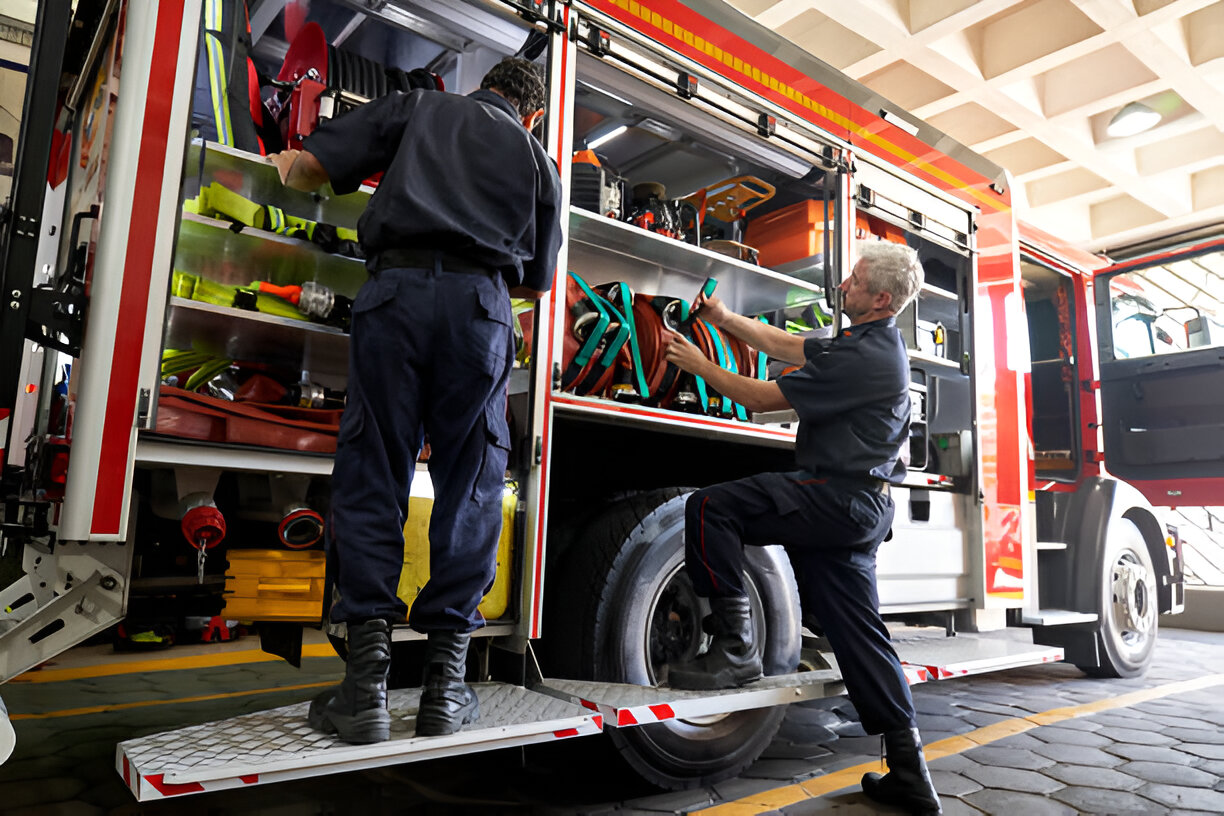Fire safety is a fundamental responsibility of any property owner, business, or household. Proper storage and maintenance of fire safety equipment are essential for ensuring these tools function optimally during emergencies. Without adequate care, even the best fire extinguishers, alarms, and sprinklers may fail, jeopardizing lives and property.
In this guide, we will explore best practices for storing and maintaining fire safety equipment to help you stay prepared and compliant with safety regulations.
Importance of Fire Safety
Fire safety is about more than installing extinguishers and alarms; it’s a comprehensive system designed to detect, prevent, and combat fires. The right fire safety measures protect lives, assets, and infrastructure.
However, the effectiveness of fire safety equipment depends heavily on proper care. Tools that are poorly maintained or improperly stored may fail to activate or work inadequately during a fire. This is why regular upkeep and strategic placement are vital.
By taking a proactive approach to fire safety, you can minimize risks and ensure peace of mind.
Types of Fire Safety Equipment and Their Storage Needs
Different types of fire safety equipment require unique storage solutions to remain effective. Understanding these needs is the first step in proper maintenance.
Fire Extinguishers
Extinguishers should be stored in visible, easily accessible locations. They must be mounted on walls or placed in cabinets to prevent tampering or accidental damage. Ensure the storage area is dry and away from extreme temperatures, as exposure to moisture or heat can compromise the extinguisher’s integrity.
Fire Alarms and Detectors
Smoke and heat detectors need to be installed in strategic locations like ceilings or hallways. They should remain unobstructed to ensure they can detect fires quickly. Regular cleaning of the sensors prevents dust buildup, which may impair functionality.
Fire Sprinkler Systems
Sprinkler systems must be inspected periodically to ensure no obstructions or damage to the pipes. Ensure valves remain open and functioning, as closed or corroded valves can lead to system failure.
Fire Blankets and Emergency Exit Signs
Fire blankets should be stored in a case or bag near cooking areas or chemical storage facilities. Emergency exit signs, on the other hand, must be illuminated and free from obstructions to guide occupants during an evacuation.
Best Practices for Maintaining Fire Safety
Regular maintenance ensures that fire safety tools function properly when needed. Below are essential practices for maintaining fire safety equipment.
Conduct Routine Inspections
Inspect all fire safety equipment monthly to identify signs of wear, damage, or malfunction. Look for things like depleted extinguisher pressure, corrosion, or expired components. Document these inspections to ensure compliance with safety standards.
Schedule Professional Servicing
While routine checks can identify obvious issues, professional servicing is essential for thorough maintenance. Certified technicians can recharge extinguishers, test alarm systems, and repair sprinkler systems. Regular servicing is a requirement in many jurisdictions.
Replace Expired Equipment
Fire safety equipment has a lifespan. For example, extinguishers generally last 5–15 years, depending on the type. Replace any equipment nearing expiration to ensure readiness.
Test Alarms and Detectors
Smoke and fire alarms should be tested monthly. Press the test button to confirm functionality, and replace batteries at least once a year. Connected systems should undergo annual testing by professionals.
Protect Against Environmental Factors
Moisture, heat, and dust can degrade fire safety equipment. Store tools in clean, dry areas and install protective covers if necessary. This is especially important for locations prone to humidity or extreme weather conditions.
Storing Fire Safety Equipment Strategically
Proper storage is just as important as maintenance. Fire safety equipment must be accessible, clearly marked, and positioned strategically throughout the building.
Easy Accessibility
In an emergency, delays can cost lives. Place fire extinguishers, blankets, and alarms in areas where they are easy to locate and reach, such as near exits, kitchens, or high-risk zones. Avoid storing equipment behind locked doors or cluttered spaces.
Compliance with Regulations
Local fire codes dictate where and how fire safety equipment should be stored. For instance, many laws require extinguishers to be mounted at specific heights or within a certain distance from workstations. Familiarize yourself with these requirements to avoid penalties and enhance safety.
Clear Signage
Use signage to indicate the location of fire safety equipment. Signs should be visible even in low light or smoke-filled conditions, helping occupants locate tools quickly.
Avoid Overcrowding Storage Areas
Overcrowding can make it difficult to access fire safety equipment during an emergency. Keep storage areas organized and free from unnecessary items that could obstruct access.
Role of Fire Safety Training
Even the best-maintained fire safety equipment is ineffective if people don’t know how to use it. Training plays a crucial role in ensuring occupants and employees are prepared for emergencies.
Educating Occupants
Train occupants on the proper use of extinguishers, alarms, and other tools. Knowing when and how to use these devices can prevent minor fires from escalating into major incidents.
Fire Drills
Conduct regular fire drills to familiarize occupants with evacuation routes and the locations of fire safety equipment. Drills ensure that everyone knows how to respond swiftly and calmly during an actual fire.
Stay Updated on Safety Protocols
Fire safety standards and best practices evolve over time. Stay informed about new regulations, equipment, and training methods to keep your building’s safety measures up-to-date.
Trusted Solutions for Your Needs
For those in Southern California, securing reliable fire safety equipment in Corona is crucial for maintaining a safe environment. Local suppliers offer tailored solutions that meet both residential and commercial needs, ensuring compliance with regional safety codes.
Whether you’re equipping a new building or upgrading existing tools, working with trusted professionals in the Corona area provides access to high-quality products and expert advice. Their comprehensive services, from installation to ongoing maintenance, help create a robust fire safety strategy.
Holistic Practices for Comprehensive Safety
Beyond physical tools, holistic approaches like Reiki Healing Online can contribute to a culture of safety and well-being. Practices such as Reiki promote relaxation and mental clarity, helping individuals stay calm under pressure—an invaluable asset during emergencies.
By fostering both physical preparedness and emotional resilience, you can create a balanced approach to fire safety and overall security.
Conclusion
Properly storing and maintaining fire safety equipment is an essential part of ensuring preparedness and protecting lives. From regular inspections to strategic placement, every detail matters when it comes to safeguarding your property and occupants.
By investing in high-quality tools, adhering to maintenance schedules, and fostering a culture of safety, you can minimize risks and maximize peace of mind. For those in need of reliable equipment, working with experts offering fire safety equipment ensures access to the best resources and services.
When combined with holistic practices and comprehensive training, these measures create a robust framework for fire safety—one that protects lives, property, and communities effectively.



